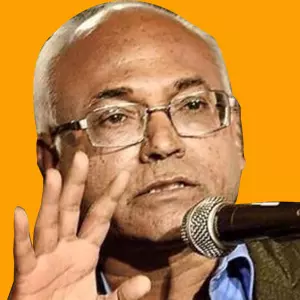
- Home
- India
- World
- Premium
- THE FEDERAL SPECIAL
- Analysis
- States
- Perspective
- Videos
- Sports
- Education
- Entertainment
- Elections
- Features
- Health
- Business
- Series
- In memoriam: Sheikh Mujibur Rahman
- Bishnoi's Men
- NEET TANGLE
- Economy Series
- Earth Day
- Kashmir’s Frozen Turbulence
- India@75
- The legend of Ramjanmabhoomi
- Liberalisation@30
- How to tame a dragon
- Celebrating biodiversity
- Farm Matters
- 50 days of solitude
- Bringing Migrants Home
- Budget 2020
- Jharkhand Votes
- The Federal Investigates
- The Federal Impact
- Vanishing Sand
- Gandhi @ 150
- Andhra Today
- Field report
- Operation Gulmarg
- Pandemic @1 Mn in India
- The Federal Year-End
- The Zero Year
- Science
- Brand studio
- Newsletter
- Elections 2024
- Events
- Home
- IndiaIndia
- World
- Analysis
- StatesStates
- PerspectivePerspective
- VideosVideos
- Sports
- Education
- Entertainment
- ElectionsElections
- Features
- Health
- BusinessBusiness
- Premium
- Loading...
Premium - Events

Centre can't throw the ball in the states’ courts, for any data collected by states will not be accepted as credible and objective; only a national caste census will do
The recent Supreme Court judgment approving sub-classification within Scheduled Castes (SCs) and Scheduled Tribes (STs) for reservation in jobs and education has produced conflicting opinions in many quarters.
Though the seven-judge Constitution Bench was supposed to address the sub-classification demand among SCs for reservation in united Andhra Pradesh and Punjab, the judgment brought under its ambit all states and also the national reservation pool.
Hence, it will have far-reaching consequences at the level of implementation.
OBC classification
Though the Supreme Court was dealing with the issue of sub-classification within SCs, the judgment is equally applicable to ST and OBC categories to ensure justice. Currently, OBCs are sub-categorized in some states but not in others.
However, the division is not based on empirical data, and the demand for one is longstanding.
Among STs, too, various conflicts have arisen based on perceived injustice to some tribes. In the North East, it has sparked major clashes.
In Telugu states, the conflict between Lambadas and forest tribes such as Koyas and Gonds is as serious as the Mala and Madiga conflict.
The apex court ruling
The Supreme Court’s 6:1 judgment, if put in simple language, is this: The demand for sub-classification of castes to ensure a proportionate share in the reservation pool to the marginalised among them is justified and constitutionally valid.
At the same time, it also said that such sub-classification in the reservation pool should be just and based on objective data of the caste with valid proof that the particular caste’s share in the given category is inadequate compared to its proportion in the caste population.
So far, all judgments about reservation share had been given on subjective reasoning. For example, the 50 per cent cap of the Supreme Court was a subjective limit in the absence of accurate caste census data.
The 10 per cent reservation to Economically Weaker Sections (EWS) was also a subjective decision, in the absence of any credible caste-based economic backwardness data. The Supreme Court assumed that 10 per cent of the general castes are poor, who cannot afford education for their children and compete with the rich among the upper castes.
Need for empirical data
But the Supreme Court, while allowing the sub-classification of castes, also mandated that credible data about the real strength of each caste and its position in the reservation quota — while adjusting the quota based on its total population in relation to other sub-castes, which are said to be benefitting more than its population share — must be collected.
In other words, the judgment directed the Union government to conduct a caste census, like the one done in 1931, as a pre-condition.
That is because even though the total population of SC/STs and their percentage in the total population is known through the national general census, the strength of each sub-caste in each state, or even in the country, is not known.
Even the total strength of OBCs vis-à-vis the general castes and SC/STs is not known. Only a caste census can reveal those figures.
Wide implications
And yet, the judgment will have implications for all categories of reservations — the SCs, the STs, and the OBCs — because across the country there are demands of each caste that it must get its due accurately in a given state and also in the central pool of reservation.
Such demands grow as more and more members of each caste, in all three reservation pools, get higher education degrees. It will come up in the general categories, too, in future.
The question of sub-caste share in the existing reservation pool is not restricted to SCs and STs only. It is a major problem in the OBC category, too, which has a 27 per cent reservation share.
Ball in Centre’s court
Several castes among OBCs have been seeking their just share within the category. For example, the Dhangars of Maharashtra fought for their share and finally got 3.5 per cent in that state. But they have no share in the UPSC examination. This judgment must be implemented by the UPSC also.
The Marathas are fighting for a share of the reservation pie. When the Maharashtra government gave them 10 per cent over and above the 50 per cent cap, the courts struck it down. Now they are demanding Kunbi certificates and want to fit into the existing 27 per cent OBC quota of that state and Centre. Similarly, the Patels (Patidars) in Gujarat have been fighting for their share in reservations.
All these movements are based on subjective projections of their sub-caste population. What is more problematic is that the Supreme Court has decided on the 50 per cent cap on a subjective criterion. It also has decided on the 10 per cent EWS reservation without any national-level poverty data among the general castes.
Therefore, the Centre cannot merely throw the ball in the states’ courts. Any data collected by the states in any mode will not be accepted by the courts as credible and objective.
Centre’s reluctance
Yet, the Union government, while arguing for sub-caste reservation in Supreme Court, keeps dragging its feet on a caste census.
This despite Prime Minister Narendra Modi’s promise to do justice to several SC sub-castes in different states during Lok Sabha election rallies earlier this year.
For example, he addressed a public meeting of Madigas in Telangana and promised that his government would support their demand for sub-classification of SC reservation. The BJP wanted the votes of the Madigas — the biggest Dalit sub-caste in Telangana — both in the 2023 Assembly elections and the 2024 parliamentary elections.
The Centre’s reluctance to get a caste census done is understandable. The UPA government had also collected caste data in an additional schedule but refused to release it because of pressure from non-Shudra castes.
The main hurdle to a caste census comes from opposition from Brahmin, Bania, Kayastha, Khatri, and Kshatriya castes. Earlier, the Shudra upper castes such as Jats, Patels, and Marathas had also opposed a caste census but they are no longer opposing at the Delhi level.
Rule of upper castes
After 1931, caste census was discontinued because the same five castes named above, who were educated and controlling all government jobs and positions during the colonial rule and in the early days after Independence, were against continuing the caste census.
In fact, intellectuals from the Dwija castes argued that the caste system itself was a colonial construct. The very same forces also argued that authentic Indian civilization could be seen only through the Vedas. Varna and caste were critical categories of social division in the Vedas, the Ramayana, and the Mahabharata.
Since the Shudras/OBCs, Dalits, and tribals were illiterate, this myth could be passed on as the truth. The blame on colonialists for ancient, medieval, and pre-colonial institutions was passed unopposed.
But now it does not work. There are enough intellectual forces among the Shudra/Dalit/Adivasi masses. In fact, they emerged from the existing reservation system across the nation, both in education and employment. This new intellectual environment has engendered new fears among the Dwijas, in whichever sphere they work.
CJI’s wisdom
CJI DY Chandrachud knows the implications of reservation or affirmative action in the process of social change. As it is well known, he has done his PhD on affirmative action with a comparative framework from Harvard University, US. He put that seal of wisdom on our Supreme Court, no doubt.
The Centre has to respect that judgment by ordering a caste census along with a general population census forthwith.
Since the very same Modi government has enacted a law by granting reservation based on economic criteria for the poor in general castes, it must also collect the economic status data of each caste in the country.
(The Federal seeks to present views and opinions from all sides of the spectrum. The information, ideas or opinions in the articles are of the author and do not necessarily reflect the views of The Federal)


